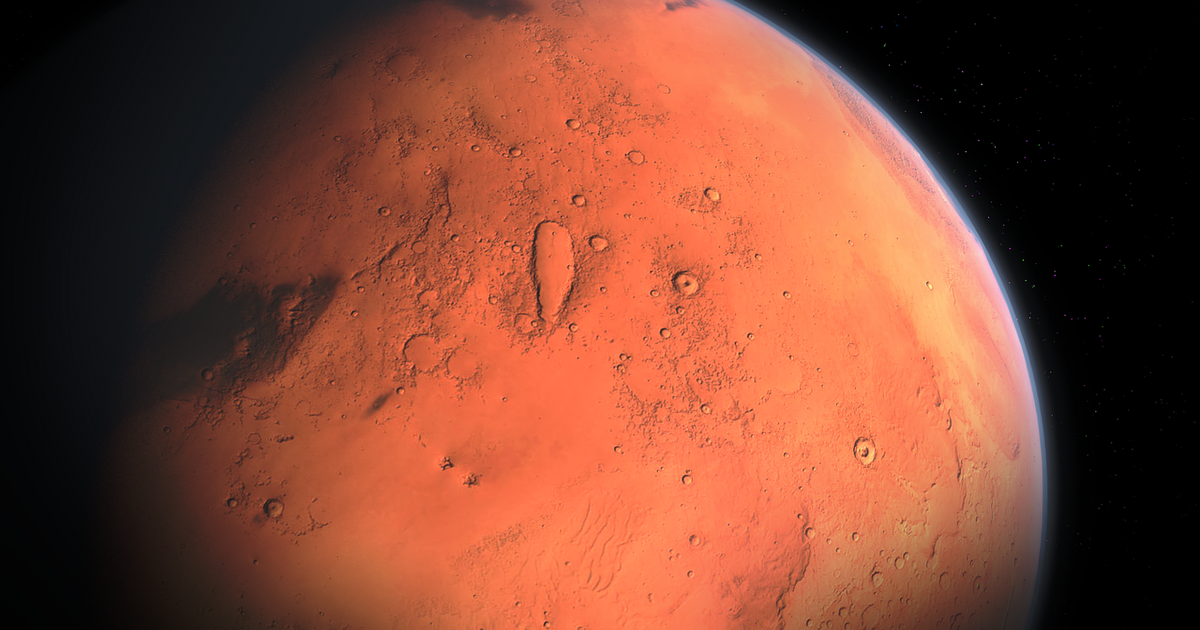Escape to Mars?
If humankind decides to colonize Mars, what practical and ethical questions will need to be decided?
February 15, 2004

If exploration of Mars were initiated in the near future, would anyone want to go? There may be a parallel here with terrestrial exploration — which was driven by a variety of motives.
The "cheap" route to Mars
The explorers who set out from Europe in the 15th and 16th century were bankrolled mainly by monarchs — in the hope of recouping exotic merchandise or colonizing new territory.
The first travelers to Mars — or the first long-term denizens of a lunar base — could be attracted by these motives as well. After all, the risks they would face would be high. But on a comforting note, no space travelers would be venturing into the unknown to the extent that the great terrestrial navigators were.
The early ocean voyagers had far less knowledge of what they might encounter — and many died in the enterprise. Nor would any space travelers be cut off from human contact.
Glorious sacrifices
There would admittedly be a 30-minute turnaround for messages to and from Mars. But it took months for traditional explorers to send messages home. Some — Captain Scott and other polar pioneers among them — had no such contact at all.
The stakes are high in opening up new worlds. It seems taken as an axiom that all should return.
Technical difficulties overcome
But maybe the most determined pioneers would be prepared to accept — as many Europeans willingly did when they set out for the New World — that there would be no return. Many could be found who would sacrifice themselves in a glorious and historic cause.
Space travel is difficult primarily because the trajectory has to be planned with high precision to minimize fuel consumption.
But if there were, say, 10 times more thrust for each kilogram of fuel, then mid-course adjustments could be made whenever necessary — just as we do when driving along a winding road.
Keeping a car on the road would be a high-precision enterprise if the journey had to be programmed beforehand — with no chance of adjustments on the way. If one could be profligate with power and fuel, space travel would be an almost unskilled exercise.
Space elevators
After all, the destination (whether the Moon, Mars or an asteroid) is in clear view. One just has to steer towards it — and use retrojets to brake by the right amount at journey’s end.
We do not yet know what kind of novel propulsion systems will prove most promising. Solar and nuclear power are the two obvious near-term options.
Commuting to space?
It would greatly help if the propulsion system and the fuel needed for escape from Earth’s gravity could be located on the ground — rather than having to be part of the cargo.
One possibility is immensely powerful ground-based lasers. Another is a space elevator, or a wire made of carbonfiber extending more than 25,000 kilometers up into space and held aloft by a geostationary satellite.
This “elevator” would allow payloads and passengers to be hoisted from the grip of Earth gravity by power supplied from the ground. The rest of the voyage could be powered by a low-thrust — perhaps nuclear — rocket.
Supplies are critical
Before human beings venture into deep space, the entire solar system will have been mapped and probed by flotillas of tiny robotic craft, controlled by the ever more powerful and miniaturized “processors” that nanotechnology will provide.
A manned expedition to Mars will have been preceded by the cargoes of provisions — and perhaps also by seeds of plants designed to thrive and multiply on the red planet.
Terraforming: Making Mars hospitable
In this regard, physicist Freeman Dyson envisages genetically engineered “designer trees” that could grow a transparent membrane around themselves that functions as a greenhouse.
In addition, brute-force methods have been proposed for “terraforming” the entire surface of Mars to render it more habitable.
That would entail warming it by injecting greenhouse gases into its tenuous atmosphere. Other options include placing huge mirrors in orbit to direct more sun light to the poles — or even covering tracts of the Martian surface with something black to absorb sunlight, such as soot or powdered basalt.
National wilderness or ready for development?
Undoubtedly, terraforming would take centuries. Still, within a century, there could be a permanent presence on localized bases. Once the infrastructure was there, two-way trips would become less costly and could be more frequent.
Issues of environmental ethics may loom large. Would it be acceptable to exploit Mars, as happened when the pioneer settlers advanced westward across the United States (with tragic consequences for the Native Americans)? Or should it be preserved as a natural wilderness, like the Antarctic?
Privately-funded space travel
The answer should depend on what the pristine state of Mars actually is.
If there were any life there already — especially if it had different DNA, testifying to quite separate origin from any life on Earth — then there would be widely voiced views that it should be preserved as unpolluted as possible.
What might actually happen would depend on the character of the first expeditions. If they were governmental (or international), Antarctic-style restraint might be feasible.
Recreating the Wild West?
On the other hand, if the explorers were privately funded adventurers of a free-enterprise (even anarchic) disposition, the Wild West model would — whether we liked it not — be more likely to prevail.
Read previous
Bold, Blonde — and Not Dumb
February 14, 2004
